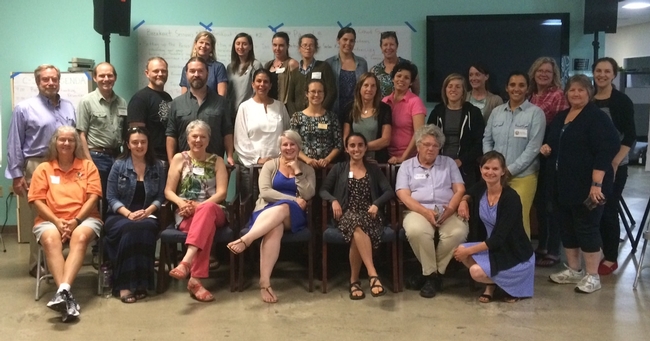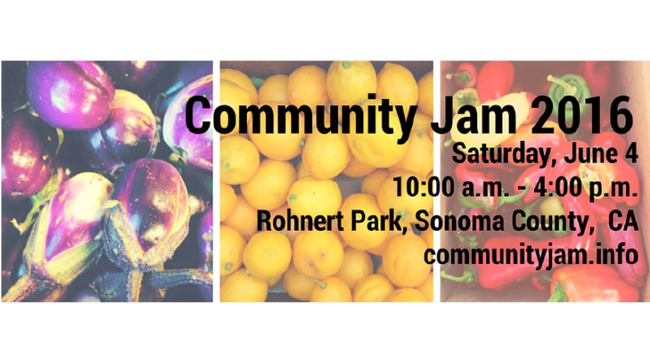
On June 4, UC Cooperative Extension Sonoma County co-hosted gleaners and food rescuers from across California for the fourth annual Community Jam – a first for the event to be held in Sonoma County. Lively conversation filled the space at SoCo Nexus, Sonoma Mountain Village, in Rohnert Park as participants shared practices and vision for recovering fresh produce and other wholesome food.
Plenary sessions and the day's orchestration were facilitated by Julia Van Soelen Kim, UCCE North Bay Food Systems Advisor, and Mimi Enright, UCCE Program Manager for Community Food Systems and Master Gardeners partnered on the event, focusing on opportunities for synergy with local food recovery efforts. Other co-hosts included Farm to Pantry, Petaluma Bounty, Sonoma Food Runners, and the Sonoma Valley Gleaning Project.
Gleaning: gather (leftover grain or other produce) after a harvest.
Craig Diserens, founder of the Northern California Community Jam, reviewed the reasons why we glean. Estimates point to 58 billion pounds of unused produce in the United States each year, while one in seven Americans experience food insecurity. “Food recovery, food waste and food rescue are all hot topic's today,” he pointed out, and gleaning leaders have a “secret sauce” of attributes to carry the needed work forward. Considering today's participants, he identified “starting with abundance thinking” as crucial.
Diserens also pointed out a need to clarify the terms we use to speak of our work. “Food recovery” is the most general, “gleaning” refers to harvesting things that grow in or out of the ground, and “food rescue” indicates edibles that have already been harvested, processed or prepared. All reduce food waste by connecting surplus with those in need in our communities.
An afternoon panel of gleaning and food rescue leaders told stories of their work. Ally Gialketsis, Ventura County Branch Coordinator for Food Forward, spoke of the limits transportation imposes on what can be recovered from the wholesale Los Angeles Produce Market.
Julia Sanders, volunteer with San Francisco Food Runners, recounted how efforts in rescuing prepared food function at “the urgent level” and are best served by keeping communication simple in the dedication to a core mission. She also identified the need for food rescue and gleaning groups to strengthen cooperation.
Emily Wilson, an Americorps VIP fellow with GleanSLO, a program of the Food Bank Coalition of San Luis Obispo County, represented an organization that gleans both farms and backyards, recovering about 200,000 pounds of produce per year. She posited the need to reflect critically on our work, and how it may feed the food system we are seeking to change.
Suzi Grady of Petaluma Bounty, whose local Bounty Hunters gleaning program complements its work with Bounty Farm and a network of community gardens, echoed an observation made frequently throughout the day, the importance of building and maintaining relationships. Sometimes, Grady noted, our work is to promote an ethic of sharing by connect sources and recipients and stepping out of the way.
A thread of collaboration ran through the day as participants explored how to share leadership within their organizations, how to improve relationships in their communities, and how to engage other organizations as partners in their communities. In a summary session, Phina Borgeson, founder of Sonoma Valley Gleaning Project, reflected on the many ways collaboration was mentioned during the day, and the collaborative challenge to further the gleaning movement.
Author - Program Manager, UC Master Gardener Program of Sonoma County & Community Food Systems
Attached Images:

